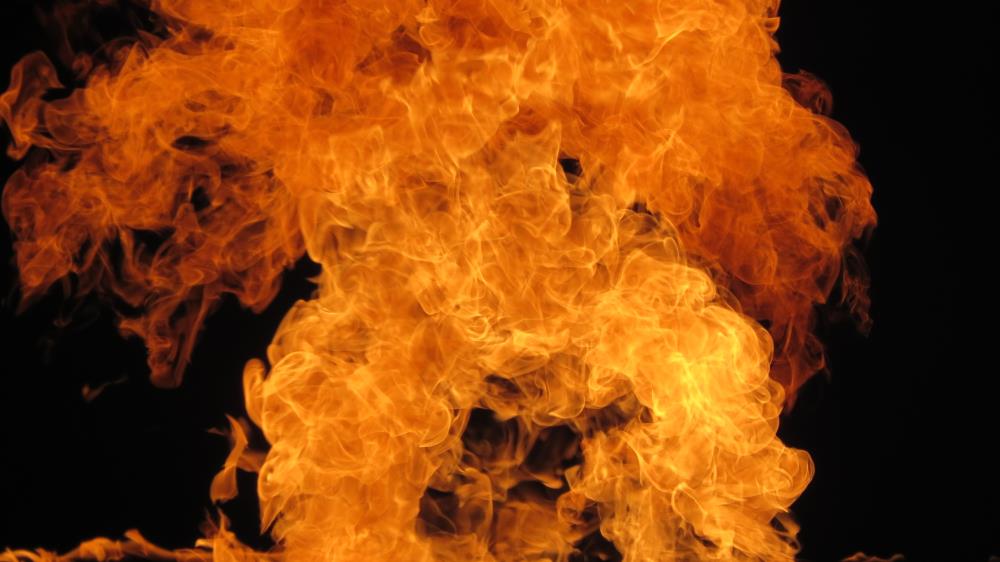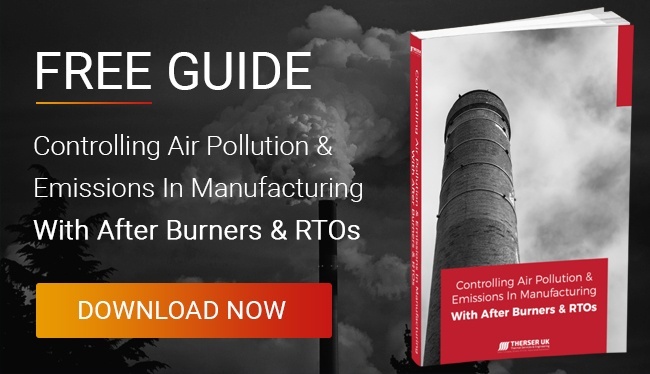Share this
RTO: Regenerative Thermal Oxidisers Explained
by Therser Sales Team on 29-Jan-2018 16:01:51

A Regenerative Thermal Oxidiser (RTO) is an effective pollution controlling incinerator used in a number of manufacturing industries. An RTO burns off airborne pollutants in furnace/kiln exhaust so that they do not get into the air and turn into toxic soot.
A Regenerative Thermal Oxidiser uses a ceramic heat transfer bed and multiple heat chambers to recover as much energy as possible after the oxidation process. In this they differ from afterburners and other incinerators. An efficient RTO will be able to recover up to 90-95% of the energy, and will often be able to operate without external power.
RTOs are widely used for treating industrial process gases containing a wide variety of VOCs and other air toxins. They not only provide a viable pollution control mechanism in a world of increasingly stringent environmental and legal emission requirements but also yield a more fuel-efficient technology in a world of ever-increasing fuel costs.
Common industrial processes include:
- Chemical processing
- Flexographic printing
- FRP manufacturing
- Heat-set printing
- Paint & coatings manufacturing
- Surface coating
- Wood finishing & manufacturing
- Many others…
Features:
- High destruction efficiency
- System flexibility
- High volumetric turn-down capacity
- Up to 95% thermal energy recovery
- Structured thermal energy recovery media
- Lower destruction temperature
Benefits:
- Complies with UK and EU clean air legislation
- Addresses wide range of process conditions
- Easily controls multiple sources of VOC emissions
- Self-sustains at Lower Explosive Limits (LEL) as low as 3%
- Lower auxiliary fuel consumption

How does at RTO differ from other incinerators?
Recuperative Thermal Oxidisers
Regenerative thermal oxidisers differ from direct flame oxidisers in that they employ a series of ceramic heat regeneration beds that enable them to transfer much of the heat energy released during the oxidation reaction to the inlet process air stream. These beds serve as highly efficient heat exchangers, recycling through conduction heat that would otherwise be lost to the atmosphere in direct flame oxidiser units.
Direct Flame Oxidisers/Incinerators
Regenerative Thermal oxidisers are frequently confused with Recuperative Thermal Oxidisers. These two incinerators share similar goals, although they differ in design. A recuperative thermal oxidiser uses a heat plate, tube or shell to heat intake air using the thermal energy from the oxidation process. This form of oxidiser is usually less effective than a regenerative oxidiser because they only recover 50%-75% of the energy.
Making The Right Choice
When it comes to deciding what unit will work best within your facility, it is important to remember that the higher the destruction efficiency, the less pollutants that you are going to release into the air. You will also need to ensure that there is proper ventilation around the unit to ensure that it is going to work properly and efficiently for its intended use.
To find out more about air pollution control, download our free eBook: Controlling Air Pollution & Emissions In Manufacturing With After Burners & RTOs. The guide explains all the different types of industrial incinerator, plus the relevant clean air legislation for common pollutants. Get your copy today by clicking here.
Share this
- Company News (90)
- Battery Materials (41)
- kiln (37)
- fabrication (29)
- Alloy (27)
- Furnace (27)
- Welding (16)
- Industrial Kilns (15)
- Battery (13)
- Ceramic Kilns (13)
- Processes (13)
- alloy fabrication (13)
- Shuttle Kilns (12)
- RTO’s (11)
- Vacancies (11)
- Hydrogen (10)
- Therser UK (9)
- Tunnel Kiln (9)
- Refractory (8)
- Therser (8)
- Wellman Furnaces (8)
- Brickwork (7)
- Case Studies (7)
- Afterburners (6)
- Fibre Lining (6)
- electric (6)
- Almor Wellman (5)
- thermal engineers (5)
- Biochar (4)
- Exhibition (4)
- Pyrolysis (4)
- Servicing (4)
- Spares (4)
- heat treatment (4)
- History (3)
- Ceramics Uk (2)
- Combustion Control Upgrades (2)
- Nitrogen (2)
- Temperature Control Rings (2)
- gas (2)
- Certificates (1)
- Instrumentation (1)
- MMC (1)
- RHK (1)
- Roller Hearth Kiln (1)
- Test Trials (1)
- aerospace (1)
- analyser (1)
- elec (1)
- oxygen (1)
- vans (1)
- September 2025 (2)
- May 2025 (2)
- March 2025 (1)
- February 2025 (2)
- January 2025 (5)
- December 2024 (5)
- November 2024 (7)
- October 2024 (5)
- September 2024 (4)
- August 2024 (14)
- July 2024 (13)
- June 2024 (2)
- May 2024 (5)
- April 2024 (13)
- March 2024 (8)
- February 2024 (12)
- January 2024 (14)
- December 2023 (6)
- November 2023 (12)
- October 2023 (24)
- September 2023 (11)
- August 2023 (11)
- July 2023 (9)
- June 2023 (15)
- May 2023 (53)
- April 2023 (5)
- March 2023 (6)
- February 2023 (7)
- January 2023 (3)
- December 2022 (8)
- November 2022 (5)
- October 2022 (11)
- September 2022 (1)
- August 2022 (2)
- July 2022 (1)
- June 2022 (2)
- May 2022 (1)
- March 2022 (1)
- February 2022 (1)
- January 2022 (1)
- December 2021 (3)
- October 2021 (1)
- August 2021 (1)
- June 2021 (1)
- May 2021 (4)
- April 2021 (2)
- March 2021 (4)
- February 2021 (2)
- December 2020 (3)
- November 2020 (1)
- September 2020 (3)
- May 2020 (1)
- April 2020 (2)
- March 2020 (1)
- January 2020 (1)
- December 2019 (1)
- July 2019 (2)
- June 2019 (1)
- April 2019 (2)
- March 2019 (3)
- February 2019 (4)
- December 2018 (1)
- November 2018 (1)
- September 2018 (2)
- August 2018 (1)
- July 2018 (1)
- May 2018 (3)
- April 2018 (1)
- February 2018 (3)
- January 2018 (2)
- December 2017 (3)
- November 2017 (1)
- October 2017 (2)
- September 2017 (4)
- August 2017 (1)
- July 2017 (2)
- June 2017 (2)
- May 2017 (3)
- April 2017 (3)


